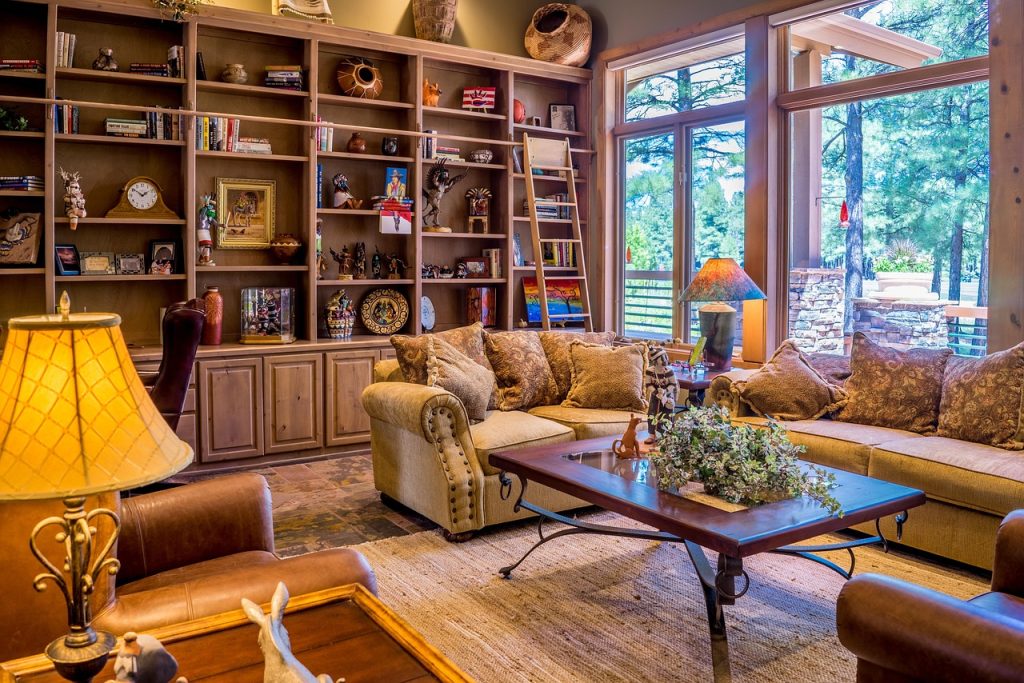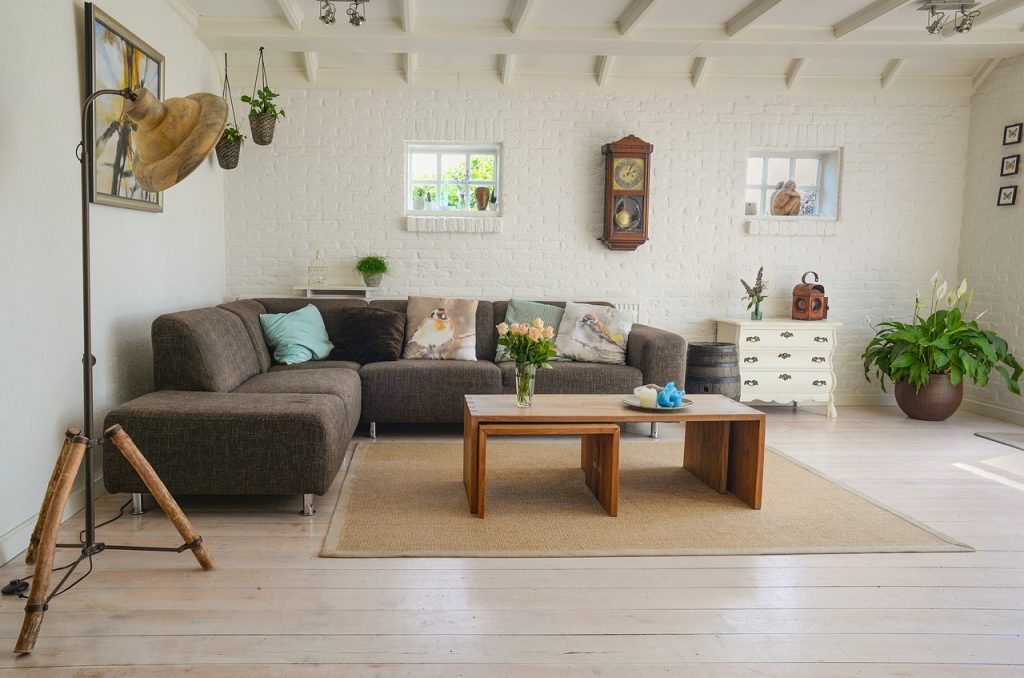In recent years, sustainable living has moved from a trend to a necessity and what better place to begin this lifestyle shift than in your living room, the heart of your home? Whether you’re a homeowner or renter, your living room likely serves as a hub for family time, relaxation, entertainment, and even work. But often, we fill these spaces with mass-produced items, synthetic materials, and wasteful decor without realizing the environmental cost. Thankfully, decorating sustainably is easier than you think, and it doesn’t mean sacrificing style or comfort. With some thoughtful planning and intentional choices, you can create a beautiful, cozy, and eco-conscious living room that reflects your values and inspires others to do the same. In this guide, we’ll explore practical and creative eco-friendly decor ideas that combine aesthetics with environmental responsibility, helping you craft a space you’ll love while caring for the planet.

1. Choose Sustainable Furniture
Opting for sustainable furniture is one of the biggest steps you can take toward an eco-friendly living room because conventional furniture often involves deforestation and synthetic materials that are harmful to the environment. Instead, look for pieces made from reclaimed wood, bamboo, recycled metals, or certified sustainable sources like FSC-certified wood. These materials are not only durable and long-lasting, but they also add unique character to your space. Supporting local furniture makers or shopping for vintage and secondhand items can reduce carbon emissions from shipping and cut down on landfill waste, all while helping you discover one-of-a-kind treasures that enrich your decor.
2. Go for Natural and Organic Fabrics
From your throw pillows and blankets to your curtains and upholstery, fabrics play a key role in your living room’s look and its environmental impact. Many common materials like polyester and acrylic are petroleum-based and non-biodegradable, which means they’ll linger in landfills for decades. A better alternative is to choose natural fabrics such as organic cotton, linen, hemp, or wool, which are biodegradable and produced with fewer harmful chemicals. These fabrics are breathable, durable, and feel luxurious while keeping your indoor air quality safer. When possible, seek out GOTS-certified textiles or recycled fabric blends to ensure sustainability without compromising comfort or style.
3. Use Low-VOC or VOC-Free Paint
Refreshing your living room with a coat of paint can uplift the entire space, but traditional paints often contain volatile organic compounds (VOCs) that release harmful chemicals into the air and affect indoor air quality. To make a healthier choice for your family and the planet, go for low-VOC or VOC-free paints that are now widely available and just as effective in color and finish. Brands like ECOS, Benjamin Moore Natura, and Clare offer eco-friendly paint options in a wide variety of shades. This small but powerful switch will reduce your exposure to toxins, especially if you spend a lot of time in the living room.
4. Bring in Houseplants for Natural Beauty
Introducing houseplants is an effortless and affordable way to green your living room both literally and figuratively by improving air quality and adding life to the decor. Plants like snake plants, pothos, peace lilies, and rubber plants not only purify the air but also bring a soothing and fresh aesthetic into your home. For a more sustainable touch, skip plastic pots and opt for planters made from terracotta, bamboo, or even upcycled containers. Decorating with plants can also boost your mental well-being, reduce stress, and create a relaxing atmosphere without relying on synthetic fragrances or materials.

5. Upgrade to Energy-Efficient Lighting
Switching to energy-efficient lighting not only reduces electricity bills but also lowers your carbon footprint, making it a win-win for you and the environment. LED bulbs are the most efficient and widely available option, using up to 80% less energy than traditional incandescent bulbs while lasting much longer. To further enhance your sustainability, incorporate smart lighting systems or timers that help minimize unnecessary usage. Natural lighting should also be maximized where possible by using sheer curtains, mirrors, or strategically placed furniture to bounce light around the room. Thoughtful lighting design helps create a warm, eco-friendly ambiance that feels both cozy and conscious.
6. Embrace Secondhand and Vintage Finds
Secondhand and vintage decor pieces offer a sustainable and stylish way to furnish your living room without contributing to overproduction or landfill waste. Items like coffee tables, mirrors, picture frames, and lamps often have more character and craftsmanship than many mass-produced alternatives. Shopping at thrift stores, antique markets, or online platforms like Facebook Marketplace and Etsy helps extend the life of existing products and often costs less. Not only are you being environmentally responsible, but you’re also adding personal charm to your space that tells a story, something you can’t always get from big-box stores.
7. Invest in Multi-Functional Furniture
Choosing multi-functional furniture is a smart way to reduce clutter and consumption while maximizing the utility of each item in your living room. Look for pieces like ottomans that double as storage units, coffee tables with hidden compartments, or sofas that convert into guest beds. These space-saving designs are perfect for smaller homes or apartments and help minimize the number of items you need to purchase. Less furniture means fewer materials used, less waste generated, and fewer things to replace or discard in the future, making it an excellent strategy for eco-conscious decorating.
8. Try Upcycling and DIY Decor Projects
Upcycling is a creative and sustainable way to breathe new life into old or unused household items, turning them into beautiful, functional decor pieces for your living room. Instead of throwing things away, consider transforming glass jars into plant holders, wooden pallets into wall shelves, or outdated picture frames into unique art displays. DIY projects allow you to personalize your space while significantly reducing waste and reliance on store-bought decorations. Plus, crafting your own decor can be a fun, rewarding activity that helps you bond with family members or friends while nurturing your creativity.
9. Support Eco-Conscious and Ethical Brands
When buying new items for your living room, it’s important to support companies that prioritize sustainability, ethical production, and responsible sourcing. Look for brands that use recycled materials, practice fair labor, and offer transparency in their supply chains. Companies like The Citizenry, Made Trade, and West Elm’s sustainable collections are excellent examples of stylish, eco-friendly offerings. Purchasing from such brands sends a powerful message about your values as a consumer and contributes to a broader movement toward responsible manufacturing, while ensuring that your home reflects not just your taste, but also your ethics.

10. Avoid Plastic and Disposable Decor
Plastic and disposable decor items may be cheap and trendy, but they often end up in landfills after a short time and contribute to long-term environmental problems. To create a more sustainable living room, consciously avoid decorations made from synthetic plastics, Styrofoam, or cheaply made composites. Instead, opt for long-lasting, earth-friendly materials like wood, metal, bamboo, or glass. These alternatives are more durable, aesthetically pleasing, and better for the planet. Making mindful choices about what you bring into your home ensures that your decor is both stylish and sustainable over the long run.
11. Keep Things Minimal and Intentional
Minimalism goes hand-in-hand with eco-friendly living, as it encourages thoughtful consumption and a clutter-free lifestyle. Instead of filling your living room with many items, focus on a few high-quality, meaningful pieces that bring you joy and serve a purpose. A minimalist approach reduces waste, helps you appreciate what you already have, and creates a peaceful environment that’s easy to maintain. It also simplifies your decision-making and curbs the temptation to keep buying unnecessary decor items. Embracing minimalism is not about empty spaces it’s about intentional living and surrounding yourself with things that truly matter.
12. Choose Sustainable Rugs and Flooring
If you’re updating your living room floor or adding a new rug, consider environmentally friendly options like jute, bamboo, cork, or organic wool. These materials are biodegradable, renewable, and generally produced without harsh chemicals, making them a healthier choice for your home. Recycled or upcycled rugs are also great alternatives that add texture and warmth without compromising your values. If you’re installing flooring, reclaimed wood or responsibly sourced hardwoods can provide a beautiful, timeless look while reducing the demand for virgin materials. Every choice matters starting from the ground up.
Conclusion
Redesigning your living room with eco-friendly decor isn’t just a trend it’s a lifestyle choice that reflects your commitment to the planet, your well-being, and the legacy you leave behind. As you’ve seen, creating a sustainable space doesn’t require huge sacrifices or a complete overhaul. It’s about making small, intentional choices from the materials you select to the brands you support and the way you reuse or repurpose items. Each change adds up, creating a living room that is stylish, safe, and full of purpose. Whether you implement one or all of these ideas, your efforts contribute to a greener future one beautiful room at a time. Start today, and let your living room tell the story of sustainability and style in perfect harmony.
